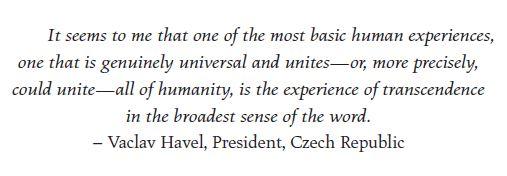
Psyche and Thanatos:
Psychospiritual Dimensions of Death and Dying
“The single most important factor responsible for the most fundamental differences between the worldview of Western industrial countries and all other human groups throughout history is not the superiority of materialistic science over primitive superstition, but the profound ignorance of modern humanity concerning holotropic states of consciousness.”
 ***
***

***
Chapter XIII
![]() t would be hard to imagine a subject that is more universal and more personally relevant for every single human being than death and dying. Over the course of our lives, all of us will lose relatives, friends, teachers, acquaintances, and important public figures, and eventually face our own biological demise. In view of this, it is quite remarkable that until the late 1960s, the Western industrial civilization showed an almost complete lack of interest in the subject of death and dying.
t would be hard to imagine a subject that is more universal and more personally relevant for every single human being than death and dying. Over the course of our lives, all of us will lose relatives, friends, teachers, acquaintances, and important public figures, and eventually face our own biological demise. In view of this, it is quite remarkable that until the late 1960s, the Western industrial civilization showed an almost complete lack of interest in the subject of death and dying.
“The only way the Newtonian-Cartesian worldview of Western science can be maintained is by systematic suppression or misinterpretation of all the evidence generated by consciousness studies”
This was true not only for the general population, but also for scientists and professionals involved in disciplines that should have been keenly interested in this subject, such as medicine, psychiatry, psychology, philosophy, and theology.

Lawrence Krauss and Steve Paikin
The only plausible explanation for this situation is fear and a massive denial of death that exists in modern industrial civilization.
American cultural anthropologist Ernest Becker showed in his book The Denial of Death that modern society is ultimately an elaborate, symbolic defense mechanism against facing our mortality. He suggested that people are trying to overcome their fear of death by creating “immortality projects, which make it possible for them to imagine that they become part of something larger than themselves, something that survives death. According to Becker, the clashes of the immortality projects of different people are responsible for most of the evil in the world—human conflicts, wars, bigotry, genocide, and racism (Becker 1973).
The disinterest of modern society in regard to death is even more striking when we compare it with the situation in ancient and pre-industrial cultures. Their attitude toward death and dying was diametrically different. Death played a central role in their cosmologies, philosophies, spiritual and ritual life, and mythologies, as well as in everyday life.
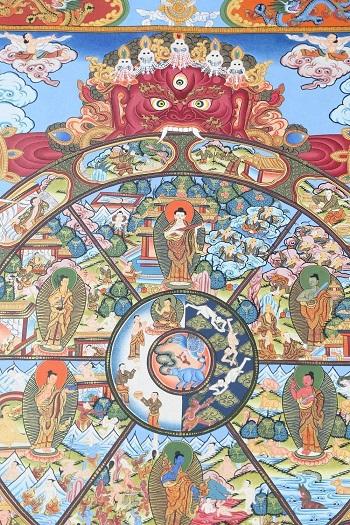
The practical importance of this difference becomes obvious when we compare the situation of a person facing death in these two different historical and cultural environments.
An average person dying in one of the Western industrial societies has a pragmatic and materialistic worldview or is at least profoundly influenced by their exposure to it. According to mainstream academic Western science, the history of the universe is the history of developing matter. Life, consciousness, and intelligence are more or less accidental and insignificant side products of this development. They appeared on the scene after many billions of years of evolution of passive and inert matter in an infinitesimally small part of an immense universe. In a world where only what is material, tangible, and measurable is real, there is no place for spirituality of any kind.
Although religious activities are generally practiced, socially sanctioned, or even formally encouraged, from a strictly scientific point of view, any involvement with spirituality appears to be irrational and indicates emotional and intellectual immaturity, stemming from either a lack of education, superstition, or regression to primitive magical thinking. Direct experiences of spiritual realities are seen and diagnosed as manifestations of psychosis, a serious mental disease. Religion, bereft of its experiential component, has largely lost the connection to its deep spiritual sources and as a result has become empty, meaningless, and increasingly irrelevant in the life of an average Westerner.
In this form, religion cannot compete with the persuasiveness of materialistic science backed up by technological triumphs. Under these circumstances, religion has ceased to be a vital force during our life, as well as at the time of dying and death. Its references to life after death, posthumous adventures of the soul, and abodes of the Beyond, such as heaven and hell, have been relegated to the realm of fairy tales and handbooks of psychiatry. The entire ritual and spiritual history of humanity has been pathologized.
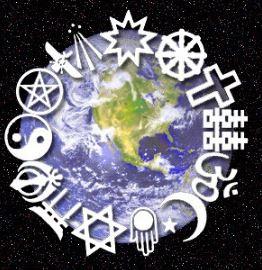
At the cradle of all the great religions of the world were perinatal and transpersonal experiences of their founders, prophets, and saints. We can think here, for example, about Buddhas encounter with Kama Mara and his army or his reliving of various episodes from his past incarnations accompanied by “tearing of the karmic bonds. The Old Testament describes Moses’ vision of Jehovah in the burning bush and the New Testament relates Jesus’ temptation by the devil during his stay in the desert, Saul’s blinding vision of Jesus on the Way to Damascus, and St. John’s experience of the Apocalypse, Islamic scriptures portray the journey of Mohammed through the seven heavens, paradise, and hell in the company of the archangel Gabriel. According to traditional psychiatry, all these experiences are indicative of severe psychopathology, a mental disease of the individuals involved.
There is an abundance of psychiatric literature in articles and books discussing what would be the best clinical diagnosis for various famous spiritual figures, some of them of the stature of the Buddha, Jesus, Mohammed, Ramakrishna, or Saint Anthony. Visionary experiences of the transpersonal realms are usually attributed to severe psychosis of the schizophrenic type or to epilepsy, as it is in the case of Mohammed. St. John of the Cross has been labeled a “hereditary degenerate and St. Teresa of Avila a “hysterical psychotic.
Mainstream anthropologists have argued whether shamans are schizophrenics, borderline psychotics, or epileptics. There is even a paper applying psychopathological criteria to meditation. It is entitled “Buddhist Training as Artificial Catatonia and its author is the famous psychoanalyst and founder of psychosomatic medicine Franz Alexander (Alexander 1931).
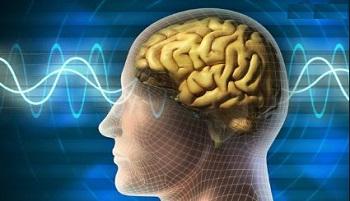
According to Western neuroscience, consciousness is an epiphenomenon of matter, a product of the physiological processes in the brain, and thus critically dependent on the body. The death of the body, more specifically of the brain, is then seen as the absolute end of any form of conscious activity. Belief in the posthumous journey of the soul, afterlife, or reincarnation is usually dismissed as a product of wishful thinking of people who are unable to accept the obvious biological imperative of death, the absolute nature of which has been scientifically proven beyond any reason-able doubt. Very few people, including most scientists, realize that we have absolutely no proof that consciousness is actually produced by the brain and not even a remote notion of how something like that could possibly happen. In spite of it, this basic metaphysical assumption remains one of the leading myths of Western materialistic science and has a profound influence on our entire society.
This attitude effectively inhibited scientific interest in the experiences of dying patients and of individuals in near-death situations until the late 1960s. The rare reports on this subject received very little attention, whether they came in the form of books for the general public, such as Jess E. Weisses The Vestibule (Weisse 1972) and Jean-Baptiste Delacour’s Glimpses of the Beyond (Delacour 1974), or scientific research, such as the study of deathbed observations of physicians and nurses conducted by Karlis Osis (Osis 1961).
Since the publication of Raymond Moody’s international bestseller Life After Life in 1975, Elizabeth Kiibler-Ross, Ken Ring, Michael Sabom, and other pioneers of thanatology have amassed impressive evidence about the extraordinary characteristics of near-death experiences, from accurate extrasensory perceptions during out-of-body experiences to profound personality changes that followed them (Kiibler-Ross 1969, Moody 1975, Ring 1982, Sabom 1982).
The material from these studies has been widely publicized and used by the media in everything from TV talk shows to Hollywood movies. Yet, these potentially paradigm-shattering observations that could revolutionize our understanding of the nature of consciousness and its relationship to the brain are still dismissed by most professionals as irrelevant hallucinations produced by a biological crisis. They are also not routinely recorded and examined as an important part of the patients’ medical history, and no specific psychological support is being offered in most of the medical facilities that would help to integrate these challenging events.
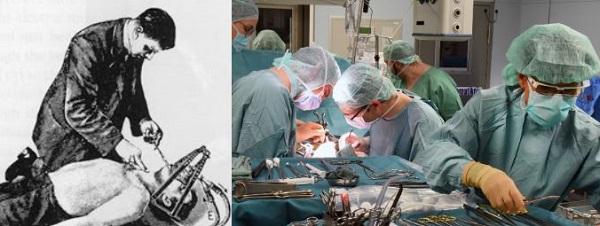
People dying in Western societies also often lack effective human support that would ease their transition. We try to protect ourselves from the emotional discomfort that death induces. The industrial world tends to remove sick and dying people to hospitals and nursing homes, the emphasis is on life-support systems and the mechanical prolongation of life, often beyond any reasonable limits, rather than the quality of the human environment.
The family system has disintegrated, and children often live far from their parents and grandparents. At the time of a medical crisis, the contact is often minimal and formal. In addition, mental health professionals, who have developed specific forms of psychological support and counseling for a large variety of emotional crises, have given almost no attention to the dying. Those facing the most profound of all imaginable crises, one that simultaneously affects the biological, emotional, interpersonal, social, philosophical, and spiritual aspects of the individual, remain the only ones for whom meaningful help is not available.
All this occurs in the much larger context of the collective denial of impermanence and mortality that characterizes Western industrial civilization. Much of our encounter with death comes in a sanitized form, where a team of professionals mitigates its immediate impact. In its extreme expression, as exemplified by Los Angeles’ Forest Lawn Memorial Park and Mortuaries, it includes postmortem barbers and hairdressers, tailors, make-up experts, and plastic surgeons who make a wide variety of cosmetic adjustments to the corpse before it is shown to relatives and friends.
The media helps to create more distance from death by diluting it into empty statistics when it is reporting, in a matter of fact way, about the thousands of victims who died in wars, revolutions, genocidal raids, and natural catastrophes. Movies and TV shows further trivialize death by capitalizing on violence. They immunize modern audiences against its emotional relevance by exposing them to countless scenes of dying, killing, and murder in the context of entertainment. Killing and destruction is also the most popular ploy in the digital games played by millions of children, adolescents, and adults.
In general, the conditions of life in modern technological countries do not offer much ideological or psychological support for people who are facing death. This contrasts very sharply with the situation encountered by those dying in one of the ancient and pre-industrial societies. Their cosmologies, philosophies, mythologies, as well as spiritual and ritual life, contain a clear message that death is not the absolute and irrevocable end of everything, that life or existence continues in some form after the time of biological demise.
 Benaras – “Sub ki Yahi Gati Hai”
Benaras – “Sub ki Yahi Gati Hai”
Another characteristic aspect of ancient and pre-industrial cultures that colors the experience of dying is their acceptance of death as an integral part of existence. Throughout their life, people living in these cultures get used to spending time around dying people, handling corpses, observing cremation, and living with their remnants. For a Westerner, a visit to a place like Benares, India where this attitude is expressed in its extreme form, can be a profound culture shock.
In addition, people dying in pre-industrial cultures typically die in the context of an extended family, clan, or tribe. ‘They thus can receive meaningful emotional support from people whom they intimately know. It is also important to mention powerful rituals conducted at the time of death that are designed to assist individuals facing the ultimate transition, or even specific guidance for the dying, such as the approach described in the Tibetan Book of the Dead (Bardo Thodol).
In Tibetan Buddhism, death is seen as a unique opportunity for spiritual liberation from the cycles of death and rebirth or, if we do not achieve liberation, a period that determines our next incarnation. In this context, it is possible to see the intermediate state between lives (bardo) as being, in a way, more important than incarnate existence. It is then essential to prepare for this time by systematic practice during our lifetime.
An extremely important factor influencing the attitude toward death and the experience of dying in pre-industrial cultures has been experiential training for dying involving holotropic states of consciousness. We have already discussed the use of these states in shamanism, in the rites of passage, in the ancient mysteries of death and rebirth, and in the work with “technologies of the sacred, which are developed in the context of the great religions of the world (pp. 4, Volume I). All these situations offer the practice of “dying before dying. Initiates in these events have an opportunity to experience psychospiritual death and rebirth, which frees them from the fear of death and transforms their experience of dying.
This includes various systems of yoga, the theory and practice of Buddhism, Taoism, Tibetan Vajrayana, Sufism, Christian mysticism, Kabbalah, and many others. These systems developed effective forms of prayers, meditations, movement meditations, breathing exercises, and other powerful techniques for inducing holotropic states with profoundly spiritual components. Like the experiences of shamans, initiates in the rites of passage, and neophytes in ancient mysteries, these procedures offered adepts the possibility of confronting impermanence and mortality, transcending their fear of death, and radically transforming their quality of being in the world.
The description of the resources available to dying people in pre-industrial cultures would not be complete without mentioning the books of the dead, such as the Tibetan Bardo Thodol, as we have seen, the Egyptian Pert em hru, the Aztec Codex Borgia, or the European Ars moriendi. When the ancient books of the dead first came to the attention of Western scholars, they were considered to be fictitious descriptions of the posthumous journey of the soul, and as such, wishful fabrications of people who were unable to accept the grim reality of death. They were put in the same category as fairy tales—imaginary creations of human fantasy that had definite artistic beauty, but no relevance for everyday reality.
However, a deeper study of these texts revealed that they had been used as guides in the context of sacred mysteries and spiritual practices and very likely described the experiences of the initiates and practitioners. From this new perspective, presenting the books of the dead as manuals for the dying appeared to be a clever disguise invented by the priests to obscure their real function and protect their deeper esoteric meaning and message from the uninitiated. However, the remaining problem was to discover the exact nature of the procedures used by the ancient spiritual systems in order to induce these states.
Modern research focusing on holotropic states brought unexpected new insights into this area. The systematic study of the experiences in psychedelic sessions, powerful non-drug forms of psychotherapy, and spontaneously occurring psychospiritual crises (“spiritual emergencies) showed that in all these situations, people can encounter an entire spectrum of unusual experiences, including sequences of agony and dying, passing through hell, facing divine judgment, being reborn, reaching the celestial realms, and confronting memories from previous incarnations. These states were strikingly similar to those described in the eschatological texts of ancient and pre-industrial cultures.
Another missing piece of the puzzle was provided by thanatology, the new scientific discipline that specifically studies death and dying. Thana- tological studies of near-death states such as Raymond Moody’s Life After Life (Moody 1975), Kenneth Ring’s Life at Death and Heading Toward
Omega (Ring 1982, 1985), Pim van Lommels’s Consciousness Beyond Life (van Lommel 1919), Michael Sabom’s Recollections of Death (Sabom 1982), Bruce Greyson and Charles Flynn’s Lite Near Death Experience (Greyson and Flynn 1984) showed that the experiences associated with a life-threatening situations bear a deep resemblance to the descriptions from the ancient books of the dead, as well as those reported by subjects in psychedelic sessions and modern experiential psychotherapy.
It has thus become clear that the ancient eschatological texts are actually maps of the inner territories of the psyche as encountered in profound holotropic states, including those associated with biological dying. The experiences involved seem to transcend race and culture and originate in the collective unconscious, as described by C. G. Jung. It is possible to spend one’s entire lifetime without ever experiencing these realms or even without being aware of their existence, until one is catapulted into them at the time of biological death.
However, for some people, this experiential area becomes available during their lifetime in a variety of situations, including psychedelic sessions or some other powerful forms of self-exploration, whether through serious spiritual practice, participation in shamanic rituals, or during spontaneous psychospiritual crises. ’This opens up the possibility of an experiential exploration of these territories of the psyche on their own terms, so that the encounter with death does not come as a complete surprise at the time of biological demise, The German Augustinian monk Abraham a Sancta Clara, who lived in the seventeenth century, expressed the importance of the experiential practice of dying in a succinct way: “The man who dies before he dies does not die when he dies.
This “dying before dying has two important consequences: it liberates the individual from the fear of death and changes his or her attitude toward it, as well as influencing the actual experience of dying at the time of the biological demise. However, this elimination of the fear of death also transforms the individual’s way of being in the world. For this reason, there is no fundamental difference between the preparation for death and the practice of dying, on the one hand, and spiritual practice leading to enlightenment on the other. This is the reason why the ancient books of the dead could be used in both situations.
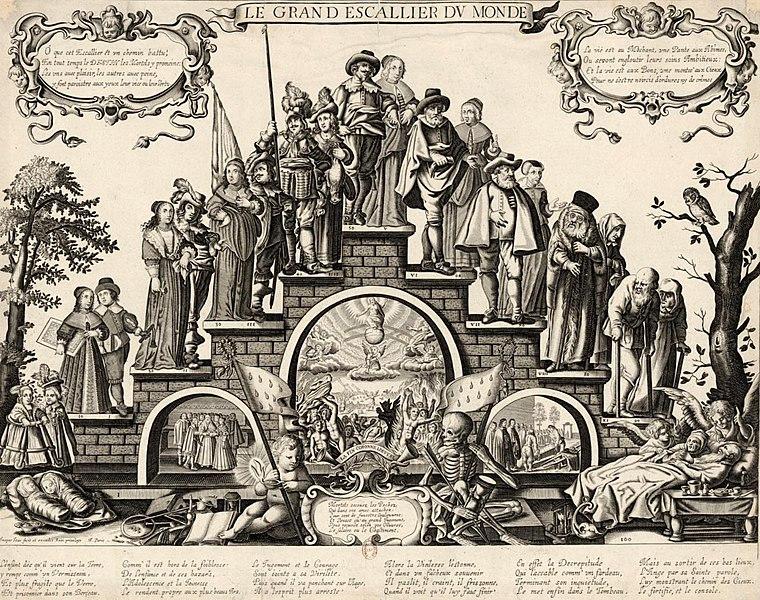
Life’s Journey
The Great Staircase – Jasparde Isaac (Jaspar Isac) – 1640(?) d. 1654.
As we have seen, many aspects of life in pre-industrial cultures make the psychological situation of dying people significantly easier in comparison with the Western technological civilization. Naturally, the question that immediately arises is whether this advantage was to a great extent due to a lack of reliable information about the nature of reality and to wishful self-deception. If that were the case, a significant part of our difficulties in facing death would simply be the toll we have to pay for our deeper knowledge of the universal scheme of things and we might prefer to bear the consequences of knowing the truth. However, closer examination of the existing evidence clearly shows that this is not the case.
The single most important factor responsible for the most fundamental differences between the worldview of Western industrial countries and all other human groups throughout history is not the superiority of materialistic science over primitive superstition, but the profound ignorance of modern humanity concerning holotropic states of consciousness. The only way the Newtonian-Cartesian worldview of Western science can be maintained is by systematic suppression or misinterpretation of all the evidence generated by consciousness studies, whether its source is history, anthropology, comparative religion, or various areas of modern research, such as parapsychology, thanatology, psychedelic therapy, sensory deprivation, experiential psychotherapies, or therapy with individuals in psychospiritual crises (“spiritual emergencies).
The systematic practice of various forms of holotropic states of consciousness, which characterizes the ritual and spiritual life of ancient and aboriginal cultures, inevitably leads to an understanding of the nature of reality and of the relationship between consciousness and matter that is fundamentally different from the belief system of technological societies. I have yet to meet a single Western academician who has done extensive inner work involving holotropic states and continues to subscribe to the current scientific understanding of consciousness, psyche, human nature, and the nature of reality as taught in Western universities.
This is entirely independent on the educational background, IQ, and specific area of expertise of the individual involved. The difference regarding the possibility of consciousness after death thus exactly reflects the differences in the attitude toward holotropic states. Ancient and pre-industrial cultures held these states in high esteem, practiced them regularly in socially sanctioned contexts, and spent much time and energy developing safe and effective techniques for inducing them.
These experiences were the main vehicle for their ritual and spiritual life and were a means of direct communication with the archetypal domains of deities and demons, forces of nature, the animal realms, and the cosmos. Additional uses of holotropic states involved diagnosing and healing diseases, cultivating intuition and ESP, and obtaining artistic inspiration, as well as practical purposes, such as following the movement of the game they were hunting and finding lost objects and people. According to British anthropologist Victor Turner, sharing holotropic states in groups also contributes to tribal bonding and tends to create a sense of deep connectedness (communitas) (Turner 2005).
Western society pathologizes all forms of holotropic states (with the exception of dreams that are not recurrent or nightmares), spends a lot of time trying to develop effective ways of suppressing them when they occur spontaneously, and tends to outlaw tools and contexts associated with them. Western psychiatry makes no distinction between a mystical experience and a psychotic experience and sees both as manifestations of mental disease. In its rejection of religion, it does not differentiate between primitive folk beliefs or the fundamentalists’ literal interpretation of scriptures, and the sophisticated mystical traditions and Eastern spiritual philosophies based on centuries of the systematic introspective exploration of the psyche. This misguided approach has pathologized the entire spiritual history of humanity.
The observations from various fields of consciousness research, however, challenge the materialistic understanding, according to which biological death represents the final end of existence and of conscious activity of any kind. In explorations of this kind, it is important to keep an open mind and focus as much as possible on the facts of observation. An unshakeable a priori commitment to the existing paradigm, which characterizes mainstream science in this area, is an attitude that is well known from fundamentalist religions. Unlike scientism of this kind, science in the true sense of the word is open to unbiased investigation of any existing phenomena.
Mainstream academic science has been defending, often quite aggressively and authoritatively, its basic metaphysical assumption that human consciousness is the product of neurophysiological processes in the brain and is fully contained inside the skull. This position, inherited from seventeenth-century philosophy and science, has thus far been impervious to modern discoveries, ranging from transpersonal psychology and various areas of consciousness research to quantum-relativistic physics. It can be maintained only through the systematic suppression of a vast amount of data from various disciplines, a basic strategy that is characteristic of fundamentalist religions, but one that should not exist in science.
Besides their theoretical relevance, the issues discussed in this chapter also have great practical significance. I have explored the importance of death for psychiatry, psychology, and psychotherapy at some length in other publications (Grof 1985, 2006b). Our past encounters with death in the form of vital threats during our postnatal history, the trauma of birth, and embryonal existence are deeply imprinted in our unconscious. In addition, the motif of death also plays an important role in the transpersonal domain of the human psyche in connection with powerful archetypal and karmic material. In all these varieties, the theme of death and dying contributes significantly to the development of emotional and psychosomatic disorders.
Conversely, confronting this material and coming to terms with the fear of death is conducive to healing, positive personality transformation, and consciousness evolution. As we discussed in connection with the ancient mysteries of death and rebirth, this “dying before dying deeply influences the quality of life and the basic strategy of existence. It reduces irrational drives (the “rat race or “treadmill type of existence) and increases the ability to live in the present and to enjoy everyday life activities. Another important consequence of freeing oneself from the fear of death is a radical opening to spirituality of a universal and non-denominational type. This tends to occur whether the encounter with death happens during a real brush with death in a NDE, or in a purely psychological way, such as in meditation, experiential therapy, a psychedelic session, or a spontaneous psychospiritual crisis (spiritual emergency).
In conclusion, I would like to mention some of rhe broadest possible implications of this material. Whether or not we believe in the survival of consciousness after death, reincarnation, and karma has very serious implications for our behavior. The idea that belief in immortality has profound moral implications can already be found in Plato, who in Laius has Socrates say that not being concerned for the post mortem consequences of one’s deeds would be “a boon to the wicked. Modern authors, such as Alan Harrington and Ernest Becker, have emphasized that the massive denial of death leads to social pathologies that have dangerous consequences for humanity (Harrington 1969, Becker 1973). Modern consciousness research certainly supports this point of view (Grof 1985).
At a time when a combination of unbridled greed, malignant aggression, and the existence of weapons of mass destruction threatens the survival of humanity and possibly life on this planet, we should seriously consider any avenue that offers some hope. While this is not a sufficient reason for uncritically embracing the material suggesting survival of consciousness after death, it should be an additional incentive for reviewing the existing data with an open mind and in the spirit of true science. The same applies to the powerful experiential technologies involving holotropic states of consciousness that make it possible to confront the fear of death and can facilitate deep positive personality transformations and spiritual openings. A radical inner transformation and rise to a new level of consciousness might be the only real hope we have in the current global crisis.
Psyche and Thanatos:
Psychospiritual Dimensions of Death and Dying
 ***
***

Read more on the subject of ‘death’ on Beezone

